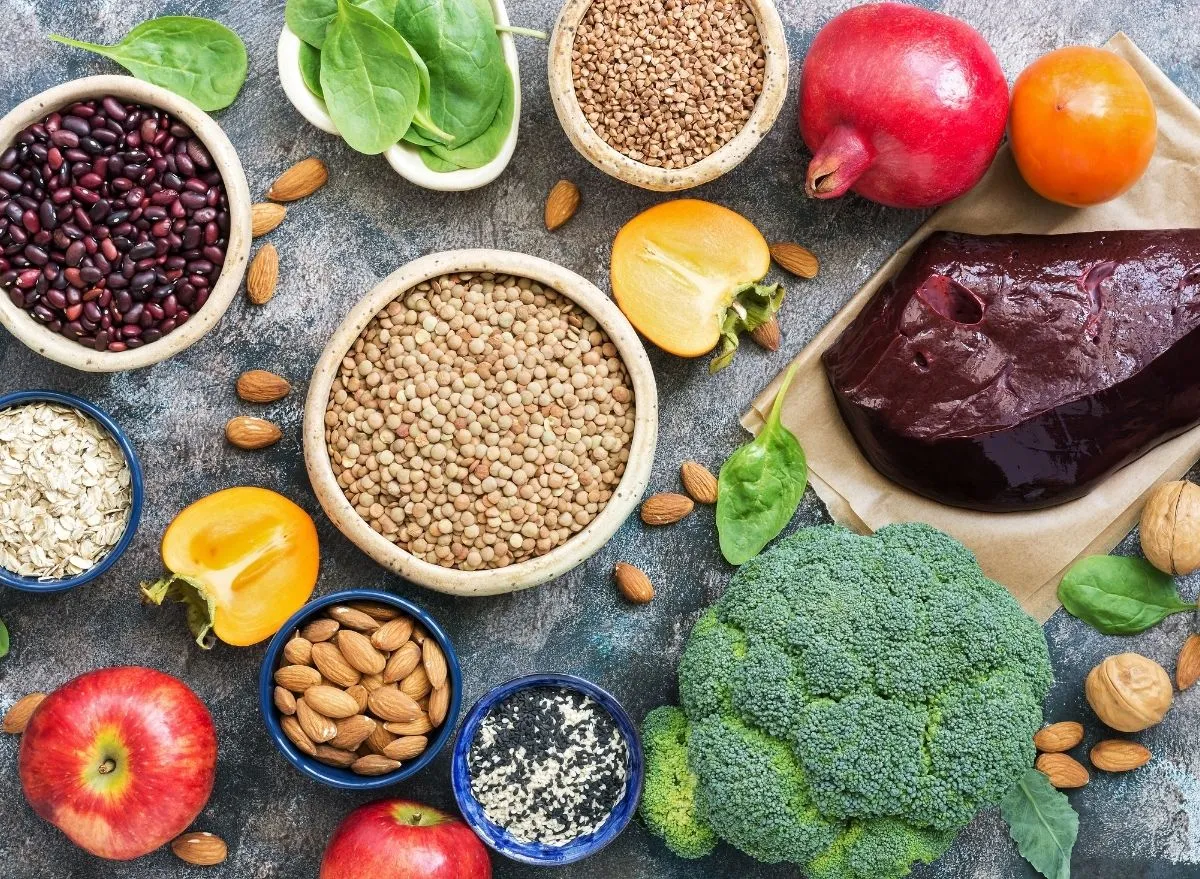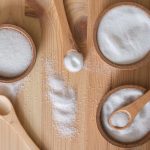
Key facts
- Iron is an important nutrient that you can only get through your diet.
- Haem iron is found in meat, poultry and fish.
- Non-haem iron is found in plants, eggs, and nuts.
- The amount of iron you need each day depends on your sex and age.
- If you are concerned about your iron intake, speak to your doctor.
What is iron?
Iron is a nutrient that comes from your diet. It’s needed for many functions in your body, with one of the most important being to prevent anaemia. Iron is needed to make haemoglobin, a molecule found in your red blood cells. Haemoglobin moves oxygen through your body.
While your body can store iron, it can’t make iron. The only way to get iron is by consuming (eating) it.
What foods contain iron?
There are 2 types of iron in food:
- haem iron — this is easily absorbed by the body
- non-haem iron — this is harder for your body to absorb
Haem iron can be found in:
- meat — beef, lamb, pork, and kangaroo
- poultry — chicken, turkey, and eggs
- seafood — salmon, sardines and tuna
- organ meats — liver, kidney and pate
Plant-based sources of non-haem iron
Plant foods containing non-haem iron can give you iron too. If you follow a plant-based diet, you will need to eat about 80% more iron to meet your dietary requirements. Good sources include:
- iron-fortified bread and breakfast cereal
- nuts and seeds
- dried fruit
- wholemeal pasta and bread
- legumes — such as mixed beans, baked beans, lentils and chickpeas
- dark leafy green vegetables — such as spinach, silver beet and broccoli
- tofu
How much iron do I need?
Your recommended dietary intake (RDI) of iron depends on your age and sex.
Regardless of sex, children should have:
- 11mg/day at 7 months to 12 months old
- 9mg/day at 1 year to 3 years old
- 10mg/day at 4 years to 8 years old
- 8mg/day at 9 years to 13 years old
Your baby’s iron stores, which build up while you’re pregnant, become low by 6 months. Iron-enriched cereals are a good first food to introduce by 6 months.
Teenagers aged 14 to 18 years should have:
- 11mg/day for males
- 15mg/day for females
Adults aged 19 to 50 years should have:
- 8mg/day for males
- 18mg/day for females
Adults aged over 50 years should have 8mg of iron a day.
Pregnant women should have an iron intake of 27mg/day. If you’re breastfeeding, you should have:
- 10mg/day if you are aged 14 years to 18 years
- 9mg/day if you are aged 19 years and over
People who have periods need more iron to replace the amount lost in blood during menstruation.
How can I improve my iron absorption?
How you prepare food, and which foods you eat together, can affect how much iron your body absorbs.
For example, eating foods rich in vitamin C can help you absorb more iron. These include:
- citrus fruits — such as oranges and lemons
- tomatoes
- berries
- kiwi fruit
- melons
- green leafy vegetables
- capsicum
Try eating these foods, uncooked, at the same time as iron-rich foods. You can also drink orange juice with your meals or take a vitamin C supplement.
Some things can reduce your iron absorption, such as:
- coffee
- tea
- red wine (both alcoholic and non-alcoholic)
- calcium-rich foods like milk or cheese
- calcium supplements
- some soybean-based foods
It’s better to have these foods in between meals.
What happens if I don’t get enough iron?
If you don’t get enough iron, you can develop iron deficiency.
Iron deficiency occurs when your iron levels are too low. Iron deficiency can:
- make you feel tired
- give you headaches
- make it difficult to concentrate
Iron deficiency can also lead to anaemia.
If you are worried that you are iron deficient, speak with your doctor. They may:
- order some blood tests
- refer you to a dietitian
- may suggest that you take iron supplements
Can I have too much iron?
Too much iron can be harmful. You should always speak with your doctor before you take iron supplements.
Some people have a genetic condition called haemochromatosis. This condition causes you to absorb and store too much iron.
About 1 person in every 200 has haemochromatosis. It’s usually found by screening people who have a close relative with the condition.
Talk with your doctor if you have any concerns about your iron levels.


